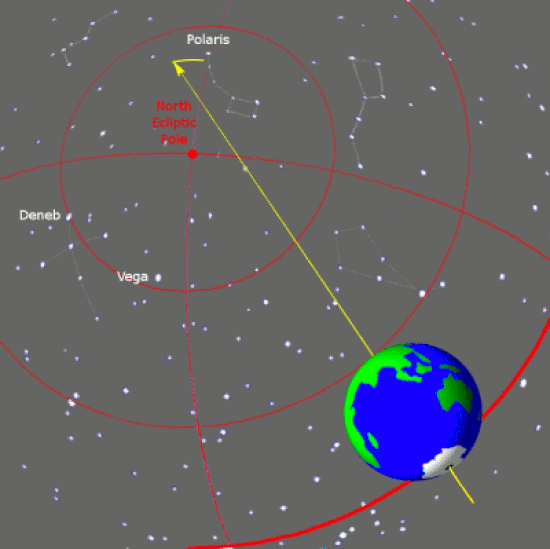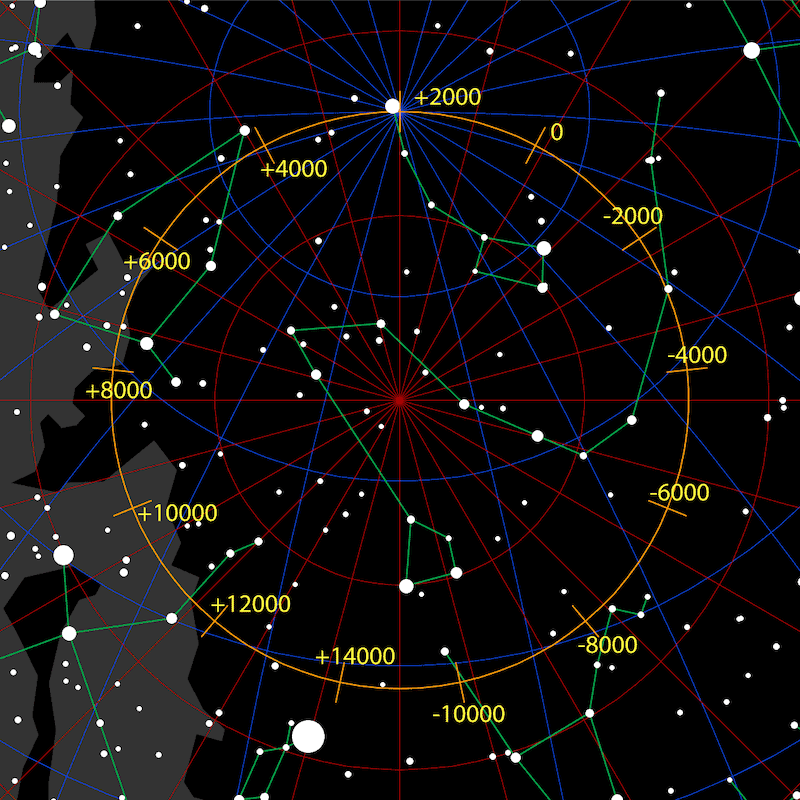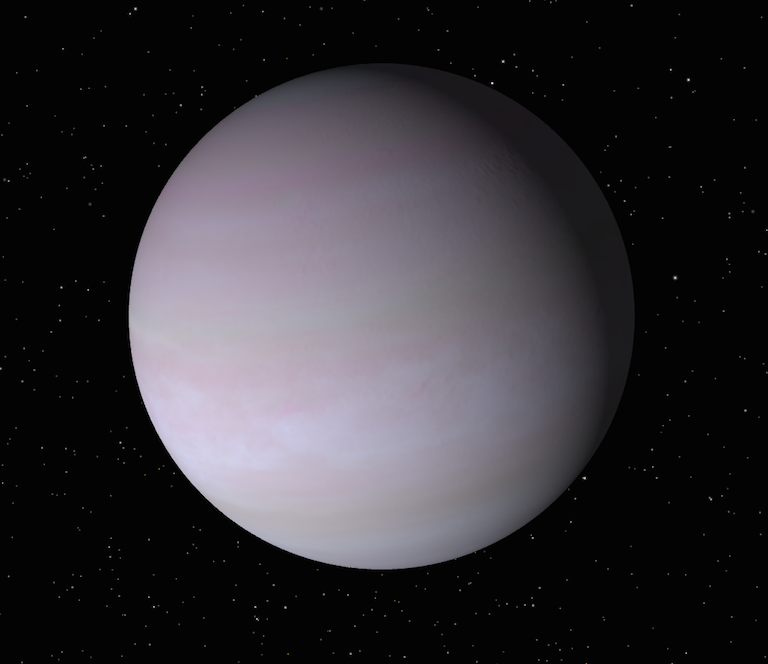
Gamma Cephei, also called Errai, is a moderately bright 3rd-magnitude star in the northern constellation Cepheus the King. Cepheus looks like a child’s drawing of a house, with Gamma Cephei marking the peak of the roof. This fascinating star has played a major role in our understanding of exoplanets, especially in multiple star systems. And interestingly, by 4,000 CE, the slow wobble of Earth’s axis will have moved Gamma Cephei into position as our North Star.
How to find Gamma Cephei
For much of the Northern Hemisphere, orange-yellow Gamma Cephei shines as a circumpolar star. Circumpolar stars closely circle the North Star (or Pole Star), neither rising nor setting because they’re always above the horizon.
Cepheus the King is not a particularly prominent constellation, but you’ll know that you’ve found Cepheus when you see his more striking wife, Cassiopeia the Queen, standing at his side.
Do you know the W-shaped constellation Cassiopeia? It’s visible in northern autumn and early winter evenings from northerly latitudes. Imagine a line between the star Caph, at one end of the W, toward Polaris, our present-day North Star. Gamma Cephei is about 2/3 of the way along that line, and very slightly westward.
Another way to find Gamma Cephei is to use the familiar Big Dipper asterism on spring and summer evenings. The two outer stars in the Dipper’s bowl are Merak and Dubhe, sometimes called the Pointers, because a line between them extended northward points to Polaris. Then jump one fist-width – held at arm’s length – beyond Polaris and you’ll find Gamma Cephei.
A future North Star
The Earth’s north rotation axis points to the north celestial pole, and this is very close to Polaris, our present North Star. However, this hasn’t always been the case. A wobbling motion of Earth known as axial precession changes the north celestial pole’s location with respect to the stars, tracing a circle in the sky approximately every 26,000 years.

Polaris will continue to reign as the North Star for a couple more millenia. Gamma Cephei stands next in line to inherit the North Star title in around 4,000 CE. And as axial precession continues to trace this cosmic circle, other stars will take over the mantle of North Star. Around 7,500 CE, Alderamin – Cepheus’ brightest star – will become the North Star. And ultimately, of course, in about 26,000 years, the crown will return to Polaris.

The science of Gamma Cephei
Gamma Cephei is about 45 light-years away from us. It’s a binary star, with two stars revolving around a common center of mass every 67 years. The larger star, about 1.4 times the mass of our sun, is an ordinary main sequence star, somewhat similar to our sun. The small star, less than half our sun’s mass, is a red dwarf star.
First exoplanet discovered, lost and rediscovered
Astronomers announced they had found a planet around the Gamma Cephei stellar system in 1988. Over the years, confusion about what type of stars existed in the system called into question whether the planet really existed, so the scientists retracted their finding in 1992. But in 2002, new observations allowed astronomers to refine their data on the two stars in Gamma Cephei, and they realized once again that a planet did indeed circle the binary pair.
The planet, named Tadmor or Gamma Cephei Ab, revolves roughly every two years around the bigger star in this binary system. Tadmor is about 1.5 times the size of Jupiter. If it were placed in our solar system, it would circle the sun in an orbit between Mars and the asteroid belt.

Bottom line: Gamma Cephei – or Errai – is a binary star system that will one day be Earth’s North Star. It’s home to the first exoplanet ever discovered.











